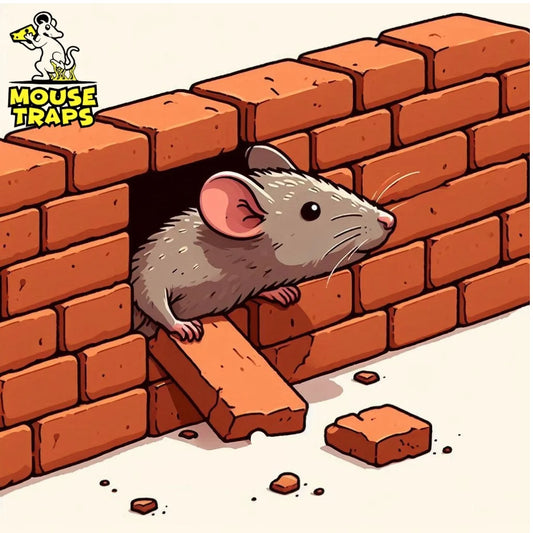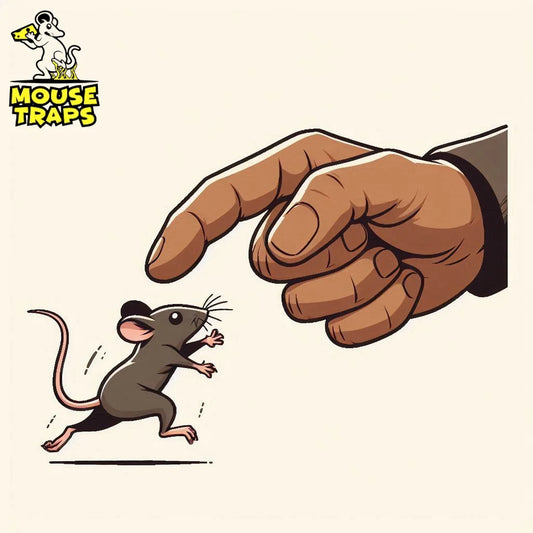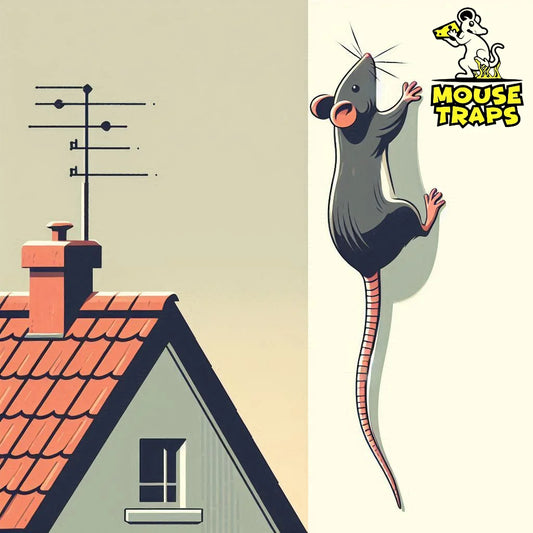Introduction:
Snap traps are classic yet effective tools in the battle against mouse infestations. With their simple design and powerful mechanism, snap traps swiftly and decisively capture mice, offering a quick to pest control. These traps are easy to set up and bait, making them accessible to both homeowners and professionals alike. Though their snap can be startling, it ensures a swift end for the mouse, minimizing suffering. While some may find them a bit old-fashioned, Using traps is still a trusted way to deal with mouse issues showing that simple solutions can often be the efficient. Setting up and baiting a snap trap effectively is crucial for successfully catching rodents.
Here's a step-by-step guide to help you use Snap Traps:

1-Choose the Right Location:
- Place the snap trap in areas where you've seen rodent activity. This could be along walls, in corners, or near entry points like holes or cracks.
- Before handling the trap, wash your hands to remove any human scent that might repel rodents.
- If the trap is new, it's a good idea to test it to make sure it's working properly. Carefully set the trap and trigger it to ensure it snaps shut quickly and with enough force.
- Choose bait that is attractive to rodents. Peanut butter, chocolate, or bits of cheese are commonly used.
- Use a small amount of bait, about the size of a pea. You want enough to attract the rodent but not so much that they can easily steal it without triggering the trap.
- Secure the bait to the trigger mechanism using a small amount of peanut butter or by tying it with thread. This setup requires the rodent to exert pressure, on the trigger in order to reach the bait making it more probable for the trap to be triggered.
- Follow the manufacturer's instructions to set the trap properly. This typically involves pulling back the spring-loaded arm and holding it in place while you set the trigger mechanism.
- Be extremely careful when setting the trap to avoid accidentally triggering it and injuring yourself.
- Position the trap perpendicular to the wall with the baited end facing the wall. Rodents typically travel along walls, so placing the trap in this orientation increases the chances of them encountering it.
- Place multiple traps in areas of high rodent activity for better results.
- Check the traps frequently, ideally every 12-24 hours, especially if you know there's rodent activity in the area.
- If you catch a rodent, wear gloves when handling the trap and rodent to avoid contact with any potential diseases.
- If the trap catches a rodent, carefully dispose of it following local regulations. Some traps allow for easy disposal without having to touch the rodent directly.
- After disposing of a caught rodent, reset the trap and rebait it if necessary. Continue monitoring and resetting traps until rodent activity ceases.
Note:
Using Snap Traps is an effective and efficient method due to it's messy procedure and danger to health concerns, you should consider using best approach to complete your mission. You should use Live mouse traps or Sticky Glue as they are more beneficial then traditional snap traps. A brief explanation and their benefits are given below;
Live Mouse Traps:
Live mouse traps are designed to capture mice without harming them, allowing for their safe release back into the wild or a suitable location away from human habitation. These types of traps usually include a box with an entrance and a device that shuts the entrance when the mouse goes inside keeping it from getting.

Benefits:
1. Humane: Live mouse traps offer a humane solution to mouse infestations by capturing mice without causing them harm or suffering.
2. Reusability: Many live traps are reusable, allowing for multiple captures without the need for frequent replacement.
3. Safe: Live traps are safe to use around children and pets since they do not involve any harmful mechanisms or chemicals.
4. Eco-friendly: Live traps contribute to environmentally friendly pest control practices by avoiding the use of pesticides or other toxic substances.
5. Observation: Live traps allow you to observe captured mice before releasing them, potentially providing insight into the extent of the infestation or identifying any health concerns.
Sticky Glue Mouse Traps:
Sticky glue mouse traps consist of a board or pad coated with a strong adhesive substance. When a mouse steps onto the trap, it becomes stuck to the adhesive, preventing movement and escape.
Click Here To Buy Sticky Pad Traps

Benefits:
1. Easy to Use: Sticky glue traps are easy to set up and require no additional baiting or handling of potentially hazardous materials.
2. Non-Toxic: Unlike some other pest control methods, sticky glue traps do not involve the use of poisons or chemicals, making them safer for use in homes with children and pets.
3. Versatility: Sticky glue traps can be placed in various locations, including along walls, in corners, and near entry points, making them suitable for different types of mouse infestations.
4. Visibility: The adhesive surface of sticky glue traps makes it easy to see when a mouse has been captured, allowing for quick removal and disposal.
5. Cost-Effective: Sticky glue traps are often inexpensive and available in bulk, making them a cost-effective option for mouse control, especially in larger infestations.
Conclusion:
When deciding between mouse traps and sticky glue mouse traps for controlling mice it's important to think about aspects, like compassion, safety and how well each method works based on what you need and prefer.




